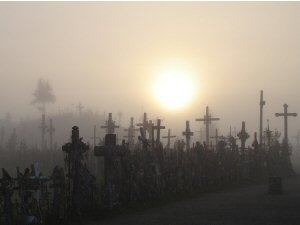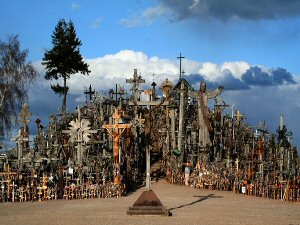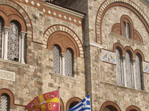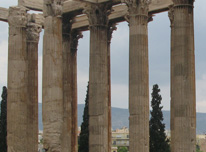Lithuanian Cross Crafting
and Its Symbolism (UNESCO WHL, 2008)


The hill of Crosses as the unique expression of spiritual and folk art aspirations
The traditional crafting of wooden crosses reflects local village cultural identities, beliefs and ceremonies. It probably was originated in the 15th century, after the Christianization of Lithuania. Cross crafting is a popular and traditional expression of historic, artistic, sociological and ethnological value. With pillar structures from 1.20 to 2 metres in height, each cross is typically carved with floral and geometric motifs, and adorned with statues of Christ or Saints. The crosses may be erected alone or in clusters, in forests and fields, near springs and crossroads. Along with religious and social meanings, the crosses also have political symbolism, for example linked to Independence of State. Since the 1920s, the crosses are also used to commemorate national holidays. Many crosses are assembled at the Hill of Crosses, a significant historical site near Siauliai, in the North part of Lithuania. There are some 200 cross-crafting masters in Lithuania. The crosses are often consecrated by blessings and prayers.











